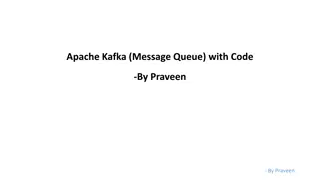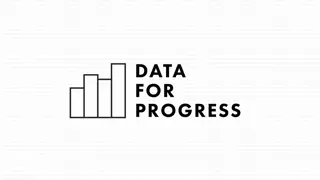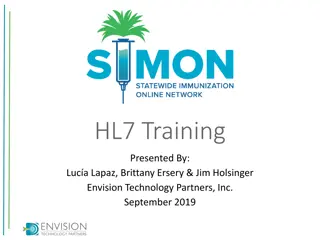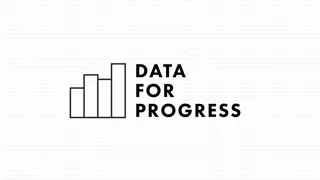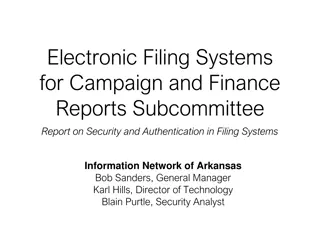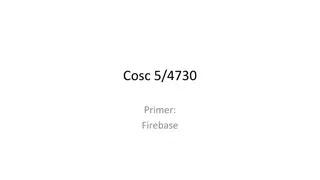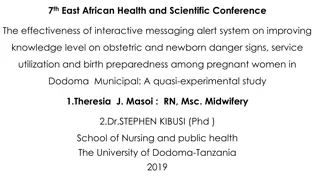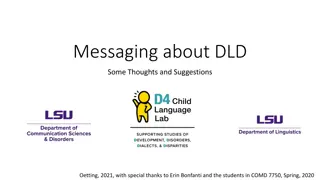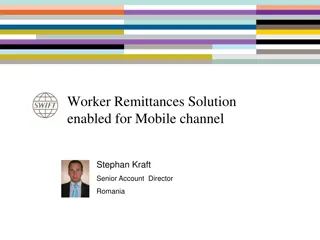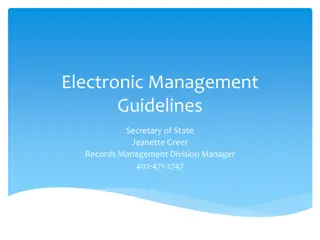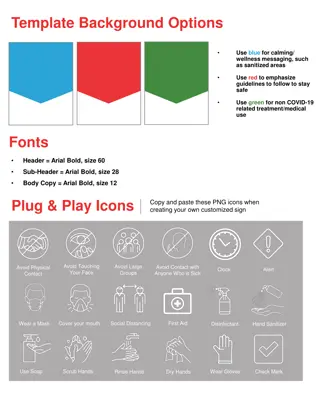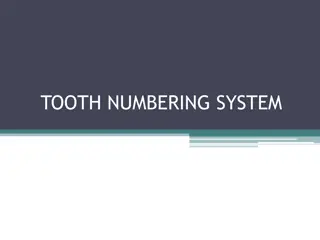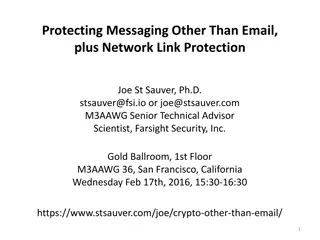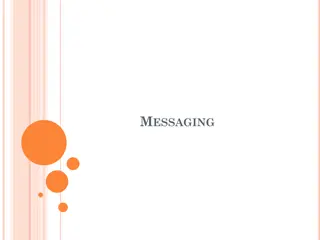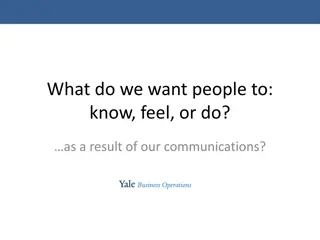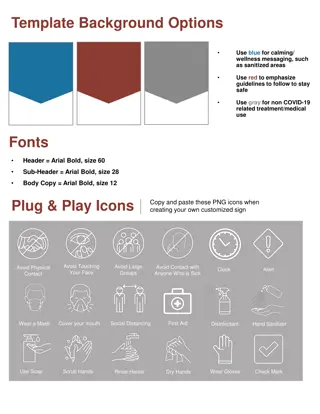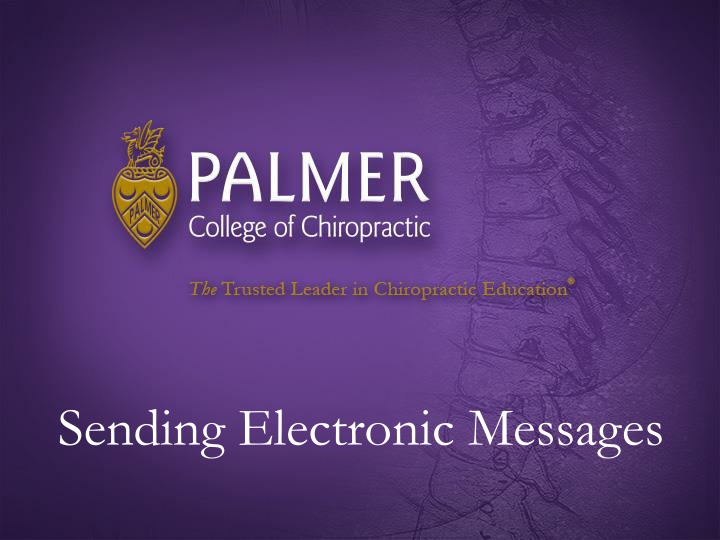
Understanding Electronic Messaging Regulations
Explore the importance of complying with electronic messaging laws and regulations. Learn about the legal framework, types of electronic messaging, and the purpose of regulations. Find out how to differentiate between transactional, commercial, and conversational messages to ensure compliance with college policies and relevant laws.
Download Presentation

Please find below an Image/Link to download the presentation.
The content on the website is provided AS IS for your information and personal use only. It may not be sold, licensed, or shared on other websites without obtaining consent from the author. If you encounter any issues during the download, it is possible that the publisher has removed the file from their server.
You are allowed to download the files provided on this website for personal or commercial use, subject to the condition that they are used lawfully. All files are the property of their respective owners.
The content on the website is provided AS IS for your information and personal use only. It may not be sold, licensed, or shared on other websites without obtaining consent from the author.
E N D
Presentation Transcript
About This Training The College uses electronic messaging to supplement its communications strategy. This training provides instructions on how to comply with the law, regulations and College policy that govern electronic messaging.
Law and Regulations Federal law and regulations govern the use of electronic messaging including: The Telephone Consumer Protection Act (TCPA) The Controlling the Assault of Non-Solicited Pornography and Marketing (CAN-SPAM) Act and Additional rulings from the Federal Communications Commission (FCC).
What is electronic messaging? Electronic messaging includes all electronic messaging applications and services including: Text Instant messaging Email Fax Voice (live, artificial or prerecorded)
What is the purpose of the law and regulations regarding electronic messaging? Reduce the amount of unsolicited (SPAM) emails and text messages people receive Regulate the sending of commercial emails with national standards Force businesses/organizations to get permission from recipients to send them commercial emails Provide individuals the right to opt-in and opt-out of receiving commercial emails Prevent misleading subject lines
How do I know if my message must comply with College policy or applicable law and regulations? What matters is the primary purpose of the message. Transactional Message: The primary purpose is to facilitate an ongoing interaction or transaction, or provide information related to an existing transaction or relationship. The first message sent by the College fulfills the consumer's request. Ex.: Patient appointment reminder, emergency alert, Bright Space course announcements, Financial Aid deadlines, confirmation messages. Commercial Messaging: The primary purpose is to advertise or promote a product or service. Ex.: Sales, marketing, promotions, recruitment Conversational Messaging: The primary purpose is to facilitate an ongoing interaction or transaction. Ex.: An employee responding to a consumer's question.
Does the College Electronic Messaging Policy apply to all electronic messages? No. The law and regulations apply only to electronic messaging sent to individuals or groups on behalf of the College, a College department or College official to non-Palmer owned or controlled devices or applications.
What are examples of electronic messaging to non-Palmer owned or controlled devices or applications? An email sent to an individual or a group using their non-Palmer email addresses A text message to an individual or group using their non-Palmer cell phone numbers A live telephone call or a pre-recorded voice message sent via an automatic telephone dialing system to a personal cell phone or personal landline
Primary Means of Official Communication The College s primary means of communicating official College information and announcements is through College-assigned email addresses. Use College-assigned email addresses to communicate information to students and employees within the College community.
STANDARDS APPLICABLE TO ALL MESSAGING
Messaging Standards All electronic messaging sent to individuals or groups on behalf of the College, a College department or College official to non-Palmer owned or controlled devices or applications must meet standard requirements for messaging and comply with applicable law and College policy. View the standards for your desired communication method: Email Messaging Standard Text Messaging Standard Phone/Fax Messaging Standard
College-wide Non-Emergency Messaging The Marketing & Communication Department is charged with the leadership and oversight of all official College-wide messaging for internal and external audiences. Requests for College-wide non-emergency messaging must be submitted to and approved by Marketing & Communication and must comply with this Policy and the College s Messaging Standard.
Messaging Campaigns and Other Mass Electronic Messaging Non-emergency messaging campaigns and other mass electronic messaging to groups may be used for College-related business purposes and is limited to departments and College officials authorized by the College. Mass electronic text messaging requires a unique phone number and completion of a registration process designated by the College s wireless carrier to send large numbers of simultaneous electronic messages for emergency alerts, opt-in marketing campaigns, and other business-related mass notifications. All electronic text messaging to groups over 50 must be authorized in advance and initiate the required wireless carrier process via the Information Technology Department. Failure to comply with these requirements will cause messages to be flagged and blocked as spam and could result in the College s loss of services by the wireless carrier.
Prohibited Electronic Messaging Prohibited electronic messaging includes but is not limited to messaging that: 1. Interferes with the normal operations of the College. 2. Is unprofessional or inappropriate for a professional school and work environment. 3. Fails to comply with law, regulations or any College policy or established standards. 4. Is sent to individuals who have not opted-in or to individuals who have opted-out though they previously opted-in. 5. Fails to prominently display and clearly communicate methods to opt-in or opt-out of further messaging. 6. Fails to prominently display identifying information about the sender (e.g., College name, department name, sender s name) and the specific purpose. 7. Spam (unsolicited bulk email).
College Messaging Campaigns Examples of permitted non-emergency mass messaging includes but is not limited to information about: Cancellations Closures Admissions and academic requirements or deadlines Registration information Financial aid Employment notices and deadlines Compliance requirements and deadlines Investigation notices Complaint or disciplinary outcome decisions Fundraising Other matters that are time sensitive and necessary for student and employee success, safety and other necessary business operations
Emergency Electronic Messaging Emergency messaging is limited to the Safety & Security Department who, in coordination with the Marketing & Communication Department, is charged with the leadership and oversight of all College emergency messaging. The College will send emergency notifications to students and employees using Palmer email and phone numbers. Additionally, the College may use personal contact information provided by students and employees who have opted-in to the Palmer Alert system for the sole purpose of sending out emergency notifications.
Supplementary Electronic Messaging The use of text, voice (live, artificial, or pre-recorded), instant messaging and fax messaging are supplementary to the College s primary means of electronic email communication. Supplementary electronic messaging may be used only for those who have opted-in to receive electronic messaging to non-Palmer owned or controlled devices or applications.
Instructor Mass Messaging Instructor mass messaging must be limited to students currently enrolled in the instructor s classes, must be class-related content, sent to Palmer-assigned email addresses and must comply with the Electronic Messaging Policy and the College s Messaging Standard.
Student Club Messaging The College s Registered Student Clubs and Organizations may send mass electronic messages to their membership only. Mass messaging should be limited to official business of the student club or organization, must be sent to Palmer-assigned email addresses and must comply with the Electronic Messaging Policy and the College s Messaging Standard.
Commercial & Marketing Email Best Practice Best practice indicates that marketing emails should allow the user to opt-in. Sample opt-in actions include: Example: Register Now Apply Schedule Visit Request More Information
Commercial & Marketing Email Best Practice Email Opt-Out Language Emails that are commercial/marketing in nature are required to offer an opt-out option. Mass email platforms, such as the ones used by the College, have a built-in requirement to give recipients a mechanism to opt-out. When users select the Unsubscribe link, they'll be sent to a confirmation page.
Messaging Samples: Texting Standard texting opt-out language samples include: Stop2End Stop2Quit Reply STOP to end




